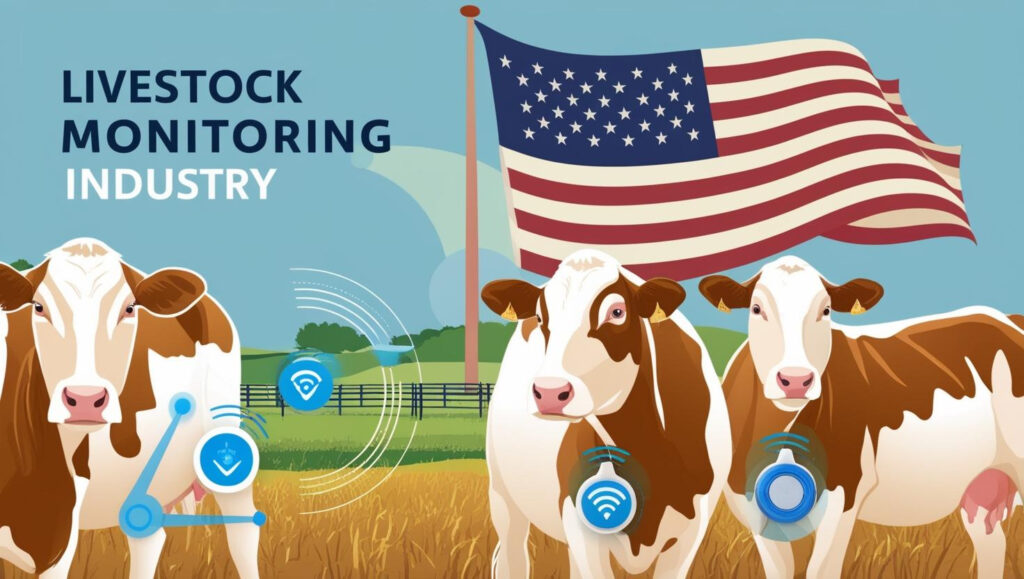The Trump-era tariffs, especially those imposed on Chinese goods, marked a significant turning point for various sectors in the U.S. economy and the livestock monitoring market was no exception. As tariffs disrupted supply chains, increased the cost of imported components, and forced companies to recalibrate their sourcing strategies, many agri-tech businesses faced a period of uncertainty.
Yet, amidst the disruption, the livestock monitoring industry has found opportunities to reimagine its trajectory. Now, as the dust settles and the market adjusts to new trade norms, a more resilient and innovation-driven future is emerging.

Request US Tariff Impact Analysis Now @ https://www.marketsandmarkets.com/forms/ctaTariffImpact.asp?id=72634532
The Tariff Disruption: A Market Shaken
Livestock monitoring systems which include wearable sensors, GPS tracking, RFID tagging, health analytics, and environmental monitoring tools rely heavily on globalized supply chains. Many of these technologies depend on imported electronic components, sensors, and IoT modules.
The imposition of tariffs led to:
- Rising costs of critical hardware
- Delays in product development and delivery
- Pressure on margins, especially for startups and smaller players
- Slower adoption rates among cost-sensitive farmers
However, these challenges also prompted a wave of innovation, adaptation, and long-term strategy shifts that are now propelling the industry into its next phase.
Post-Tariff Pivot: Adaptation Sparks Innovation
Companies that survived the tariff disruptions did so by embracing agility. Key strategies included:
- Localizing supply chains to reduce reliance on tariffed imports
- Partnering with domestic component manufacturers
- Focusing on software-driven value like predictive analytics and cloud-based platforms
- Redesigning hardware to minimize high-cost imports
These moves not only mitigated the immediate impact of tariffs but also set the foundation for a more self-reliant and resilient industry.
The Next Phase: Opportunities in a Reshaped Landscape
As the livestock monitoring market stabilizes and reorients, several growth opportunities are coming into focus:
1. Technology Integration Across the Agri-Tech Ecosystem
Livestock monitoring is increasingly being integrated with broader farm management platforms — connecting data from crops, soil, weather, and animals into unified dashboards. This enhances decision-making and boosts ROI for farmers.
2. Demand for Sustainable and Ethical Farming
Consumer demand for transparency in food production is rising. Livestock monitoring tools that support animal welfare, traceability, and environmental sustainability are gaining traction, especially among premium meat and dairy producers.
3. Expansion into Emerging Markets
With localization strategies in place, U.S.-based companies are now well-positioned to expand into international markets where digitization in agriculture is gaining momentum.
4. Government Incentives and Smart Farming Initiatives
U.S. federal and state programs promoting precision agriculture and sustainability are offering grants, subsidies, and technical support, creating a favorable environment for livestock monitoring adoption.
Strategic Imperatives Moving Forward
To fully unlock the opportunity in this post-tariff era, stakeholders in the livestock monitoring space should:
- Invest in R&D for more affordable, rugged, and scalable sensor technologies
- Foster partnerships with farmers, cooperatives, and agri-tech platforms
- Emphasize data security and usability in software tools
- Build supply chain agility to hedge against future trade uncertainties
Conclusion: A Future Built on Lessons Learned
The tariff disruptions may have been a formidable challenge, but they also revealed the livestock monitoring industry’s adaptability and long-term potential. As companies emerge with stronger foundations, diversified supply chains, and smarter technologies, the next phase promises not just recovery but renewed growth, innovation, and global competitiveness.